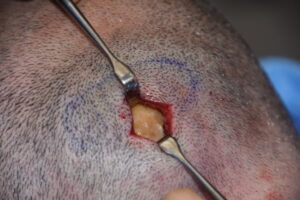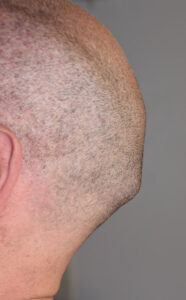Background: The skull is largely a smooth convex surface with few significant irregularities. Thus when a raised ridge or bump is present it is easily noticed particularly in patients with shorter hair. One of the most common and innocuous skull bumps is known as the occipital knob which appears in the midline of the lower end of the back of the head. Its presence is reflective of an overgrowth of a naturally occurring bony prominence.
Reduction of an enlarged occipital knob, also known anatomically as external occipital protuberance reduction, is one of the most effective of all aesthetic skull reshaping procedures performed. Almost exclusively performed in men, a complete reduction and back of head contouring is possible in all patients.
Because shorter hairstyles dominate the patients who seek this procedure the size of the incision needed perform the procedure is an important part of the procedure. The smaller the incision the better in any aesthetic operation. While scalp incisions typically heal very well, it is nonetheless important to get it as small as possible. The incision just needs to be long enough to permit access for a 360 bone reduction by burring.
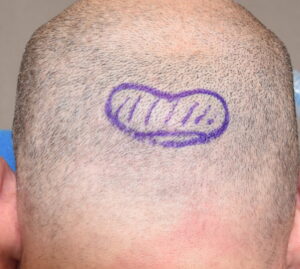
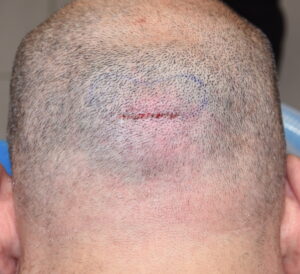
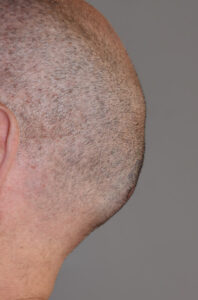
Like the tip of an iceberg the enlarged occipital knob is ways much bigger than it looks on the outside. But this does not mean that a large scalp incision is necessary to reduce it. The key is an adequate internal pocket not a large incision to do so.
Case Highlights:
1) The occipital knob skull deformity is usually round and centric but can be more horizontally oriented due to nuchal ridge extensions.
2) A very small scalp can be used to remove a skull bone mass that is much bigger.
3) In removing an occipital knob it is important to reduce the expanded galeal layer over it so the skin can contract down around it.




